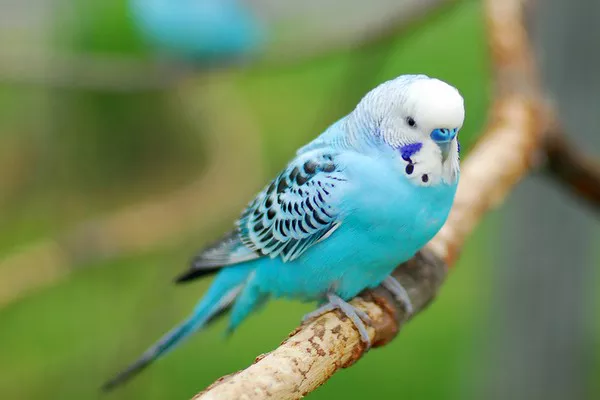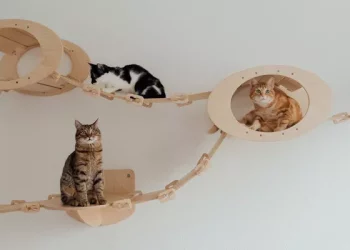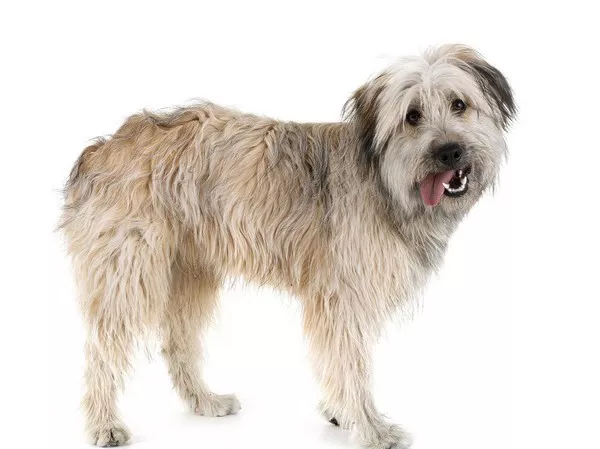American Shorthair cats are among the most popular and beloved cat breeds in the world. Known for their friendly nature, easygoing personality, and low-maintenance coat, they make great pets for families, singles, and even elderly owners. However, like all breeds, American Shorthairs can experience specific health issues, and eye problems are one area that some owners may encounter. In this article, we will explore whether American Shorthair cats are prone to eye problems, the types of eye issues they might face, and how to care for their eyes to ensure they stay healthy.
The American Shorthair is a breed with a long and rich history. Originally brought to North America by European settlers to help control vermin, the breed quickly became known for its intelligence, agility, and good temperament. It is a medium-to-large cat with a muscular build and a broad, round face. They have short, dense fur that comes in many different colors and patterns, and they are particularly admired for their wide, expressive eyes.
These cats are typically healthy, but like all animals, they can develop health problems as they age. Understanding the potential health issues, including eye problems, is an important part of being a responsible pet owner.
Common Eye Problems in Cats
Cats, including American Shorthairs, are prone to a variety of eye conditions. These issues can range from minor irritations to more serious diseases that can affect a cat’s vision. Below are some of the most common eye problems that might affect American Shorthairs:
1. Conjunctivitis
Conjunctivitis, also known as “pink eye,” is one of the most common eye problems in cats. It occurs when the conjunctiva, the thin membrane that covers the white part of the eye and lines the inside of the eyelids, becomes inflamed. Conjunctivitis can be caused by several factors, including infections (viral, bacterial, or fungal), allergies, or irritants such as dust or chemicals.
Signs of conjunctivitis in American Shorthairs include:
- Redness or swelling of the eye
- Discharge, which can be clear, yellow, or green
- Squinting or excessive blinking
- Increased tearing
If left untreated, conjunctivitis can lead to more severe complications, including corneal ulcers or scarring of the eye. Therefore, it is important to visit a veterinarian if you notice symptoms of conjunctivitis in your American Shorthair.
2. Keratitis
Keratitis is the inflammation of the cornea, the clear outer layer of the eye. It can be caused by injury, infection, or a tear in the corneal tissue. In American Shorthairs, keratitis is often linked to conjunctivitis or trauma to the eye.
Signs of keratitis include:
- Cloudy or bluish tint to the cornea
- Excessive squinting
- Discharge or crusting around the eye
- Pain, as the cat may avoid bright light or paw at its eye
Keratitis can be a serious condition if not addressed promptly. Treatment often involves antibiotics, antivirals, or other medications to reduce inflammation and prevent further damage to the eye.
3. Uveitis
Uveitis is the inflammation of the uvea, which is the middle layer of the eye that contains blood vessels. This condition can cause redness, pain, and vision problems. In American Shorthairs, uveitis can be caused by infections, trauma, or certain systemic conditions such as feline leukemia virus (FeLV) or feline immunodeficiency virus (FIV).
Signs of uveitis include:
- A cloudy or blue appearance to the cornea
- A smaller, more constricted pupil
- Excessive tearing or discharge
- Squinting or rubbing the eyes
Uveitis is often a serious condition, and if it is left untreated, it can lead to vision loss. Treatment typically involves medication to reduce inflammation and address the underlying cause.
4. Corneal Ulcers
A corneal ulcer is an open sore on the surface of the cornea. This painful condition can be caused by trauma (such as scratching or a foreign object in the eye), infections, or dry eye. Corneal ulcers are a serious problem that requires immediate veterinary attention, as they can lead to scarring, permanent vision loss, or even the need for an eye enucleation (removal).
Signs of a corneal ulcer include:
- Squinting or keeping the eye shut
- Excessive tearing
- A visible clouding or white spot on the eye
- Pawing at the eye or rubbing the face against objects
Treatment for corneal ulcers typically includes antibiotic eye drops or ointments, and in severe cases, surgery might be required.
5. Dry Eye (Keratoconjunctivitis Sicca)
Dry eye, or keratoconjunctivitis sicca (KCS), is a condition where the cat’s eyes do not produce enough tears to keep the cornea moist and comfortable. This can lead to irritation, dryness, and increased susceptibility to infections.
Signs of dry eye in American Shorthairs include:
- Thick, yellow-green discharge from the eyes
- Redness or irritation around the eyes
- Squinting or pawing at the eyes
- Thickened or dry cornea
Treatment for dry eye often involves the use of artificial tears, medications to stimulate tear production, and in some cases, surgery to improve tear drainage.
6. Eyelid Problems
Eyelid abnormalities are another category of eye issues that American Shorthairs may experience. Conditions like entropion (where the eyelid rolls inward) or ectropion (where the eyelid rolls outward) can cause irritation and discomfort. Entropion, in particular, is more common in breeds with short, flat faces and can lead to the eyelashes rubbing against the cornea, causing pain and injury.
Signs of eyelid problems include:
- Red, inflamed eyelids
- Excessive tearing or discharge
- Squinting or pawing at the eyes
- A noticeable change in the position of the eyelid (either inward or outward)
Treatment for eyelid problems often involves surgical correction, especially if the condition is causing significant discomfort or vision problems.
Are American Shorthair Cats Prone to Eye Problems?
American Shorthairs, like all cat breeds, have the potential to experience certain health problems, including eye issues. However, they are generally considered a healthy breed, and there are no widespread genetic conditions related to eye problems that are specific to the breed.
That said, there are a few factors that can influence the likelihood of eye problems in American Shorthairs:
Genetics: While American Shorthairs are not particularly prone to hereditary eye problems, some individual cats may inherit conditions from their parents that could affect their eyes. Breeders who prioritize health and genetics are less likely to produce cats with eye problems.
Breed Characteristics: American Shorthairs have a round, broad face and large, expressive eyes. While this does not inherently make them more susceptible to eye problems, it is important to be aware of the unique structure of their face. Flat-faced cats (brachycephalic) tend to have more eye-related issues, but American Shorthairs are not as extreme in this regard as breeds like the Persian or Exotic Shorthair.
Age: As American Shorthairs age, they may become more susceptible to age-related eye problems, such as cataracts or progressive retinal atrophy (PRA), which can lead to blindness. Regular eye checkups are important for older cats to detect any signs of these conditions early.
Environmental Factors: Environmental factors such as dust, allergens, or exposure to chemicals can increase the risk of eye problems. Keeping your American Shorthair indoors or in a controlled environment can help minimize the risk of eye injuries and infections.
How to Care for Your American Shorthair’s Eyes
Preventing eye problems and ensuring good eye health is essential for your American Shorthair’s overall well-being. Here are some tips to help you care for your cat’s eyes:
Regular Eye Inspections: Check your cat’s eyes regularly for any signs of redness, discharge, squinting, or cloudiness. Catching problems early can make treatment more effective and prevent more serious conditions from developing.
Clean the Eyes: If your cat has discharge around the eyes, use a soft, damp cloth to gently clean the area. Avoid using harsh chemicals or wipes that may irritate the eyes.
Ensure Proper Nutrition: A healthy diet rich in vitamins, especially vitamin A, supports eye health. Ensure your American Shorthair is eating a balanced diet appropriate for their age and health status.
Avoid Eye Trauma: Keep your home environment safe and free of hazards that could cause injury to your cat’s eyes. Prevent access to sharp objects or chemicals that could potentially cause irritation or infection.
Veterinary Checkups: Regular veterinary checkups are essential for your cat’s overall health, including its eyes. Your veterinarian can perform routine eye exams to detect early signs of eye diseases, and they can offer guidance on how to manage any problems.
Address Infections Promptly: If you notice signs of infection, such as discharge, swelling, or excessive squinting, take your cat to the vet right away. Eye infections can worsen quickly, and early treatment is key to preventing long-term damage.
Conclusion
In general, American Shorthair cats are not more prone to eye problems than other breeds, but like all cats, they can still experience eye issues. Some of the most common conditions include conjunctivitis, corneal ulcers, and dry eye. While these problems are often treatable, it is important to be vigilant and proactive about your cat’s eye health.
Regular veterinary visits, a clean and safe environment, and proper nutrition can go a long way in maintaining your American Shorthair’s eye health. By understanding the signs of potential eye problems and addressing them promptly, you can ensure your cat enjoys a lifetime of clear vision and good health.
Related Topics:
























